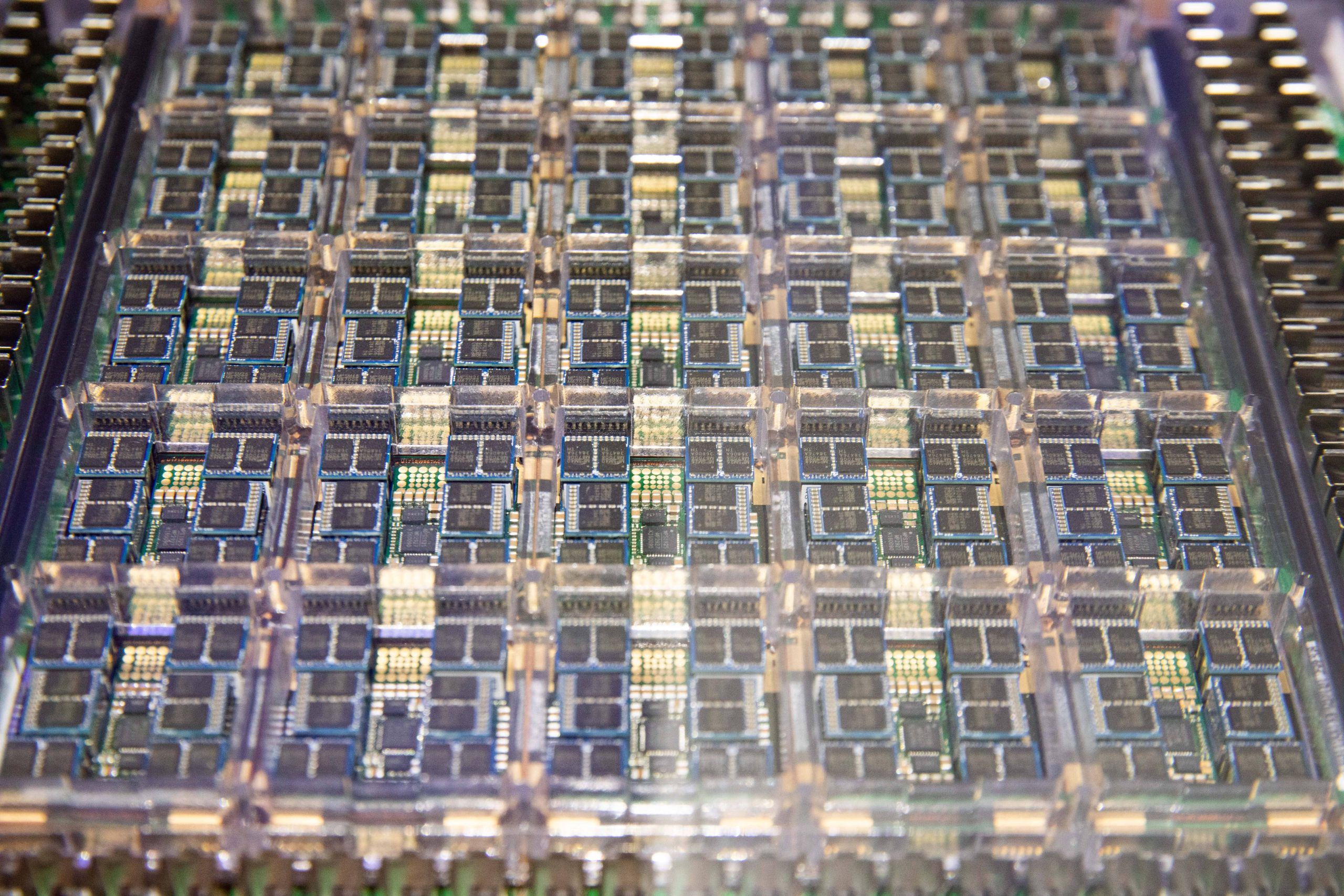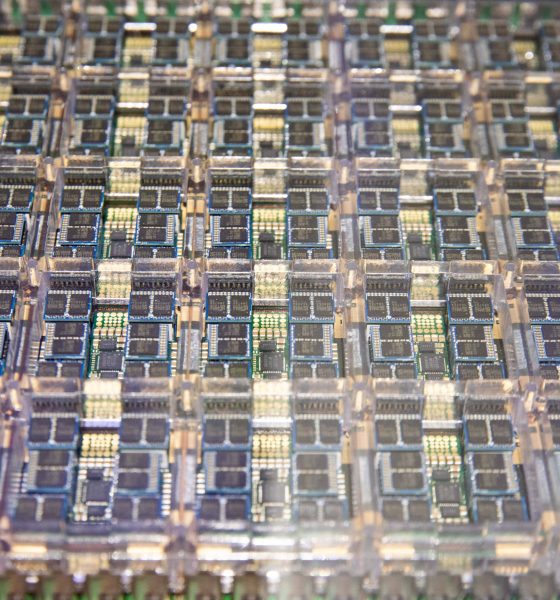

News
[Updated – Corrected] Tesla China denies rumored “Tesla” venture in Jinan, China
Correction:
A spokesperson from Tesla China has issued a statement about the reported joint venture. According to the Tesla China spokesperson, the venture “has nothing to do” with the Texas-based electric vehicle maker. Data from Chinese corporate registry Qichacha also showed that the “Tesla” in the filings was listed as “Tesla Motors Limited,” which is based in the UK.
Context:
This story was initially sourced from data posted in Qichacha (QCC), a data and analytics company focused on China-based private and public companies. It’s a go-to service for company registration info in the country. Notable Chinese broadsheets such as Beijing Daily, the official newspaper of the Beijing municipal committee of the Chinese Communist Party (CCP), reported on the topic. Sina News, another news site that covered the story, also noted that the joint venture echoed a similar company established by BYD, which is also based in Jinan. The venture was also connected to the Jinan Licheng Financial Holding Group and the Jinan Licheng District Finance Bureau, both of which are close to the state.
Following is a tweet Teslarati posted when the legitimacy of this story was challenged.
We have pulled an article regarding Tesla and Annex Semiconductors being involved in a possible joint venture. We are attempting to verify the source of this article currently and will update you when we have more details. Thank you for your patience and we apologize.— TESLARATI (@Teslarati) November 28, 2022
**Original article is below.**
Tesla has plans to ramp its electric vehicle production by a notable degree in the coming years, and with the company’s constant innovations, it would need to secure a lot of resources, from battery raw materials to computer chips.
In this light, reports have emerged suggesting that Tesla has established a semiconductor joint venture in Jinan of eastern China’s Shandong Province. The joint venture is intended to supply automotive chip and electronics solutions. Tesla partnered with Swiss automotive semiconductor company Annex for the joint venture, which boasts a registered capital of $150 million.
As per a report from Chinese tech publication ijiwei, Tesla holds a 5% equity in the company for now, while Annex holds a 55% stake, and the Jinan Zurich Annex Equity Investment Fund Partnership holds a 40% stake. It should be noted that the Jinan Zurich fund acquired Annex this past June in a $5 billion deal, according to local reports.
Tesla has a formidable partner in Annex, as the Swiss company is among the global leaders in automotive system-on-chip (SoC), microcontroller (MCU), and processor, image sensor, and power device products. This likely provides the joint venture with the necessary technical know-how and experience to develop optimal semiconductors for the electric vehicle maker and its products.
If the recent reports from China prove accurate, it would appear that Tesla is making a serious play for the semiconductor market. Just recently, for example, reports have suggested that Taiwan Semiconductor Manufacturing Company Limited (TSMC) would be Tesla’s supplier of choice for its next-generation FSD computer, which would reportedly be manufactured at 4 nm and 5 nm processes.
Tesla’s chip order from TSMC is reportedly substantial, so much so that it would effectively make the American electric vehicle maker one of the chipmaker’s top seven customers next year. These reports present a pretty exciting picture for Tesla next year, as the Cybertruck, the first vehicle in the company’s lineup confirmed to have a next-generation computer, would also be entering production in 2023.
Don’t hesitate to contact us with news tips. Just send a message to simon@teslarati.com to give us a heads up.

News
Tesla FSD Supervised wins MotorTrend’s Best Driver Assistance Award
The decision marks a notable reversal for the publication from prior years, with judges citing major real-world improvements that pushed Tesla’s latest FSD software ahead of every competing ADAS system.

Tesla’s Full Self-Driving (Supervised) system has been named the best driver-assistance technology on the market, earning top honors at the 2026 MotorTrend Best Tech Awards.
The decision marks a notable reversal for the publication from prior years, with judges citing major real-world improvements that pushed Tesla’s latest FSD software ahead of every competing ADAS system. And it wasn’t even close.
MotorTrend reverses course
MotorTrend awarded Tesla FSD (Supervised) its 2026 Best Tech Driver Assistance title after extensive testing of the latest v14 software. The publication acknowledged that it had previously criticized earlier versions of FSD for erratic behavior and near-miss incidents, ultimately favoring rivals such as GM’s Super Cruise in earlier evaluations.
According to MotorTrend, the newest iteration of FSD resolved many of those shortcomings. Testers said v14 showed far smoother behavior in complex urban scenarios, including unprotected left turns, traffic circles, emergency vehicles, and dense city streets. While the system still requires constant driver supervision, judges concluded that no other advanced driver-assistance system currently matches its breadth of capability.
Unlike rival systems that rely on combinations of cameras, radar, lidar, and mapped highways, Tesla’s FSD operates using a camera-only approach and is capable of driving on city streets, rural roads, and freeways. MotorTrend stated that pure utility, the ability to handle nearly all road types, ultimately separated FSD from competitors like Ford BlueCruise, GM Super Cruise, and BMW’s Highway Assistant.
High cost and high capability
MotorTrend also addressed FSD’s pricing, which remains significantly higher than rival systems. Tesla currently charges $8,000 for a one-time purchase or $99 per month for a subscription, compared with far lower upfront and subscription costs from other automakers. The publication noted that the premium is justified given FSD’s unmatched scope and continuous software evolution.
Safety remained a central focus of the evaluation. While testers reported collision-free operation over thousands of miles, they noted ongoing concerns around FSD’s configurable driving modes, including options that allow aggressive driving and speeds beyond posted limits. MotorTrend emphasized that, like all Level 2 systems, FSD still depends on a fully attentive human driver at all times.
Despite those caveats, the publication concluded that Tesla’s rapid software progress fundamentally reshaped the competitive landscape. For drivers seeking the most capable hands-on driver-assistance system available today, MotorTrend concluded Tesla FSD (Supervised) now stands alone at the top.
News
Elon Musk’s Grokipedia surges to 5.6M articles, almost 79% of English Wikipedia
The explosive growth marks a major milestone for the AI-powered online encyclopedia, which was launched by Elon Musk’s xAI just months ago.

Elon Musk’s Grokipedia has grown to an impressive 5,615,201 articles as of today, closing in on 79% of the English Wikipedia’s current total of 7,119,376 articles.
The explosive growth marks a major milestone for the AI-powered online encyclopedia, which was launched by Elon Musk’s xAI just months ago. Needless to say, it would only be a matter of time before Grokipedia exceeds English Wikipedia in sheer volume.
Grokipedia’s rapid growth
xAI’s vision for Grokipedia emphasizes neutrality, while Grok’s reasoning capabilities allow for fast drafting and fact-checking. When Elon Musk announced the initiative in late September 2025, he noted that Grokipedia would be an improvement to Wikipedia because it would be designed to avoid bias.
At the time, Musk noted that Grokipedia “is a necessary step towards the xAI goal of understanding the Universe.”
Grokipedia was launched in late October, and while xAI was careful to list it only as Version 0.1 at the time, the online encyclopedia immediately earned praise. Wikipedia co-founder Larry Sanger highlighted the project’s innovative approach, noting how it leverages AI to fill knowledge gaps and enable rapid updates. Netizens also observed how Grokipedia tends to present articles in a more objective manner compared to Wikipedia, which is edited by humans.
Elon Musk’s ambitious plans
With 5,615,201 total articles, Grokipedia has now grown to almost 79% of English Wikipedia’s article base. This is incredibly quick, though Grokipedia remains text-only for now. xAI, for its part, has now updated the online encyclopedia’s iteration to v0.2.
Elon Musk has shared bold ideas for Grokipedia, including sending a record of the entire knowledge base to space as part of xAI’s mission to preserve and expand human understanding. At some point, Musk stated that Grokipedia will be renamed to Encyclopedia Galactica, and it will be sent to the cosmos.
“When Grokipedia is good enough (long way to go), we will change the name to Encyclopedia Galactica. It will be an open source distillation of all knowledge, including audio, images and video. Join xAI to help build the sci-fi version of the Library of Alexandria!” Musk wrote, adding in a later post that “Copies will be etched in stone and sent to the Moon, Mars and beyond. This time, it will not be lost.”
News
Tesla Model 3 becomes Netherlands’ best-selling used EV in 2025
More than one in ten second-hand electric cars sold in the country last year was a Tesla Model 3.

The Tesla Model 3 became the most popular used electric car in the Netherlands in 2025, cementing its dominance well beyond the country’s new-car market.
After years at the top of Dutch EV sales charts, the Model 3 now leads the country’s second-hand EV market by a wide margin, as record used-car purchases pushed electric vehicles further into the mainstream.
Model 3 takes a commanding lead
The Netherlands recorded more than 2.1 million used car sales last year, the highest level on record. Of those, roughly 4.8%, or about 102,000 vehicles, were electric. Within that growing segment, the Tesla Model 3 stood far ahead of its competitors.
In 2025 alone, 11,338 used Model 3s changed hands, giving the car an 11.1% share of the country’s entire used EV market. That means more than one in ten second-hand electric cars sold in the country last year was a Tesla Model 3, Auto Week Netherlands reported. The scale of its lead is striking: the gap between the Model 3 and the second-place finisher, the Volkswagen ID3, is more than 6,700 vehicles.
Rivals trail as residual values shape rankings
The Volkswagen ID.3 ranked a distant second, with 4,595 used units sold and a 4.5% market share. Close behind was the Audi e-tron, which placed third with 4,236 registrations. As noted by Auto Week Netherlands, relatively low residual values likely boosted the e-tron’s appeal in the used market, despite its higher original price.
Other strong performers included the Kia Niro, the Tesla Model Y, and the Hyundai Kona, highlighting continued demand for compact and midsize electric vehicles with proven range and reliability. No other model, however, came close to matching the Model 3’s scale or market presence.








